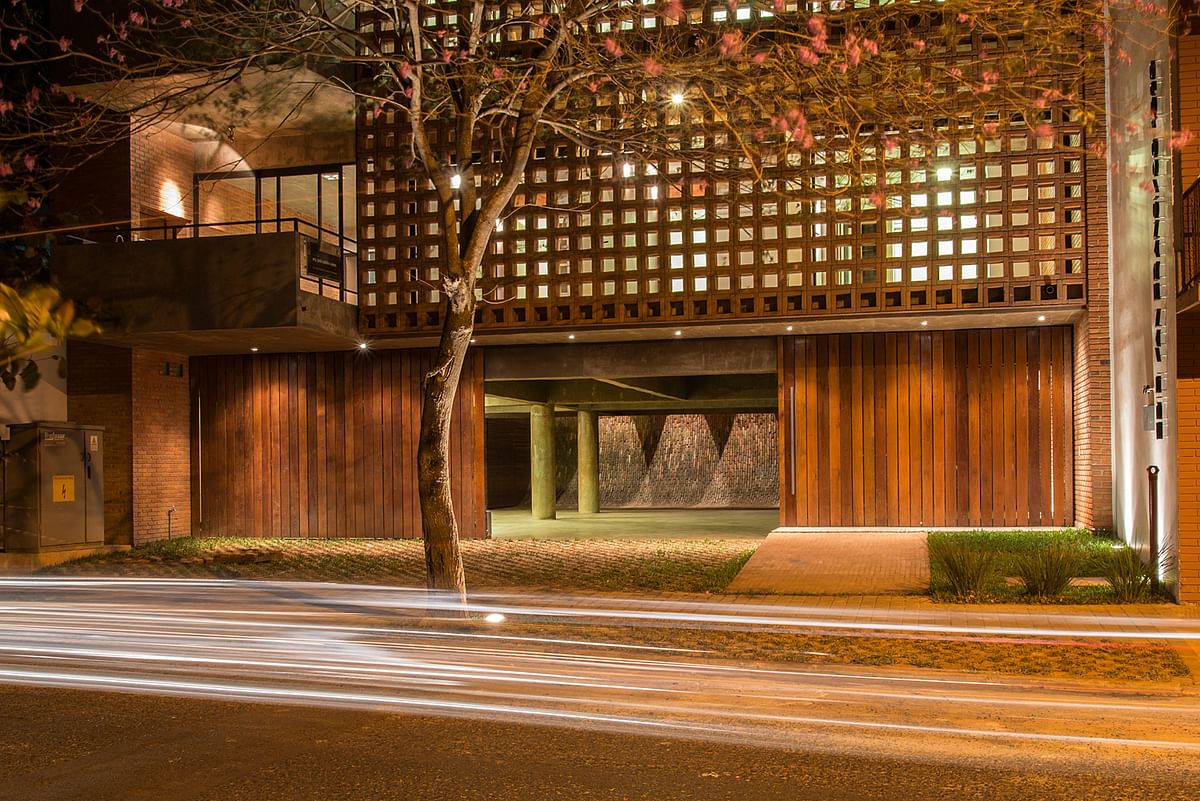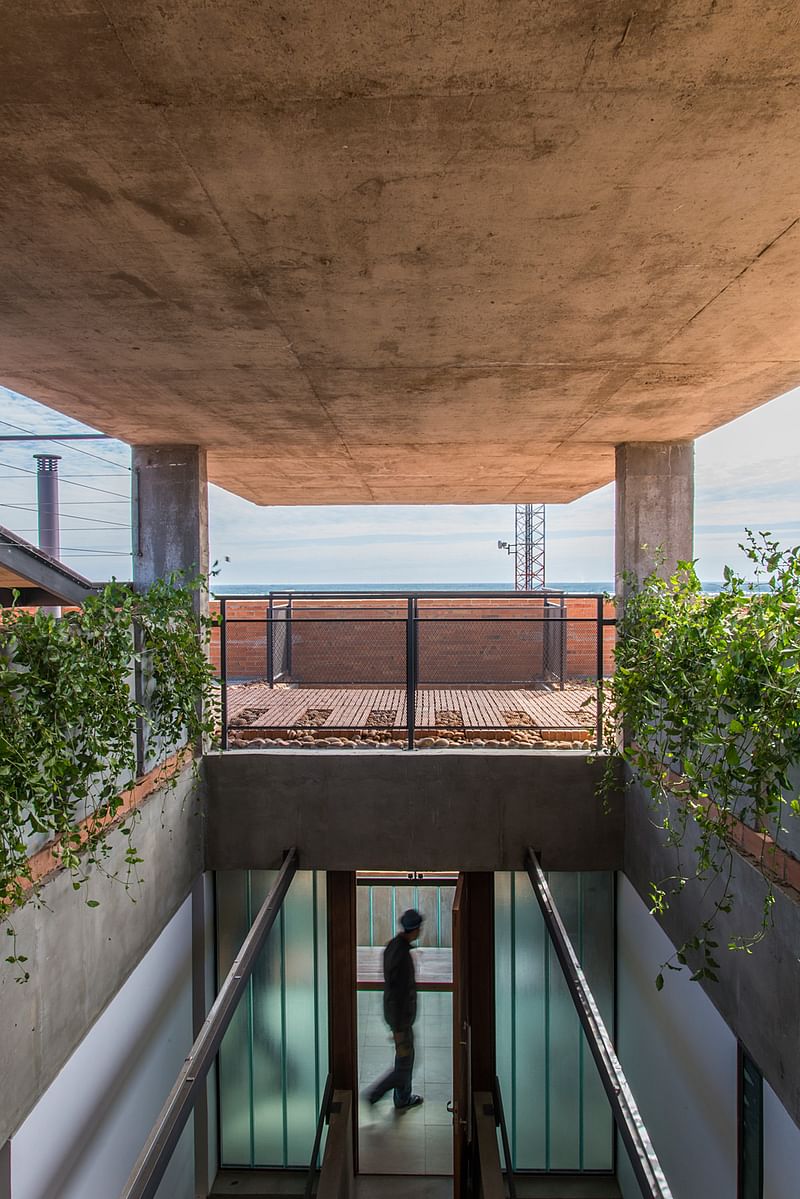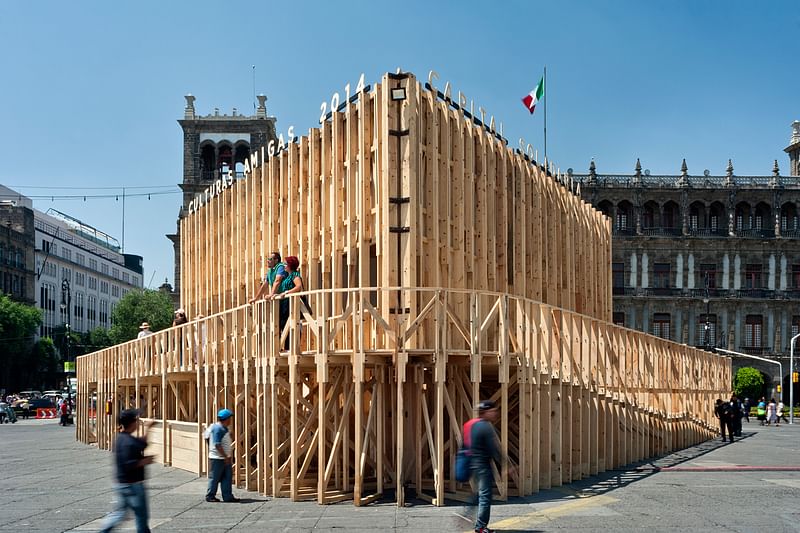
Five MCHAP.emerge finalist projects revealed in the prize's latest cycle
By Justine Testado|
Tuesday, Mar 22, 2016
Related
Now in its second cycle, the Illinois Institute of Technology's biennial Mies Crown Hall Americas Prize honors some of the best built architectural projects in the Americas. The MCHAP was established as part of IIT College of Architecture Dean Wiel Arets' "Rethinking Metropolis" initiative in revamping the architecture school's pedagogy.
In an announcement earlier this month, Dean Arets and MCHAP Director Dirk Denison revealed the nominees and jury of the main 2014/2015 MCHAP competition, with the MCHAP Finalists expected to be revealed in June. Their announcement also revealed other key events in the prize's second cycle, including the MCHAP.emerge award (recognizes emerging architecture practices) and the creation of a new third prize, MCHAP.student (awarded to a student proposal submitted by faculty from the MCHAP School Network).
Most recently, the MCHAP.emerge finalists were revealed. Out of 55 nominations, which were exhibited at the S.R. Crown Hall earlier this month, the jury narrowed down the competition pool to five finalist projects. The winner will then be unveiled during the MCHAP.emerge Symposium on April 1 at S.R. Crown Hall.
Check out the finalist projects below.
San Francisco Building in Asunción, Paraguay by Jose Cubilla & Asociados


Project excerpt: "It is very important not cause a negative impact to the site. We are interested in the involvement of architects in the construction process. Serenity, austerity ,material crudity, economy and achieve the desired space or protected and appropriate shelter, make this an opportunity to finish building the space, without losing the memory of our roots, and respect for our very special climate. Local labor, local materials and low costs, recycling materials, the shadow or penumbra, the city and time are themes that are reflected in the project. Respect for the social, natural and technical resources conditions in which the project is formulated."
C.I.D.; Road to Ayquina, Chile by Emilio Marin & Juan Carlos Lopez Arquitectos


Project excerpt: "The main strategy of the project is to integrate to the project three dimensions of natural origin; Geographical, landscape and ecological dimension, through three project operations, nested in: organization, material and space. First, the geographical dimension of the desert gives an order to volumes intended for exhibition; these are positioned as opposed to the distant volcanoes of the Andes. Then, in the same way that the large and disproportionate monochrome landscapes of the Atacama Desert, the building wears a mantle of a single material. Corten Steel completely envelops the architectural shape, causing it to be transformed into a steel melt rock lost in the vastness of the desert. Finally the space, which assumes the ecological dimension of the project. It creates the conditions for an integrated experience among vegetation and visitors, a central vacuum that protects from wind allowing the existence of a small oasis surrounded by an open corridor, which also is a viewpoint to the sky."
Haffenden House in Syracuse, NY, United States by Jon Lott, PARA Project


Project excerpt: "I prefer to discuss this in relationship to others... I've always been drawn to that project by Pettena. His ice block is a kind of comfortably resting misfit – a great blend of foreign and familiar. I love how it works simultaneously as an object and a void. a type of placeholder for the familiar, but suspiciously foreign, defined strictly by its context. I studied under Gianni for a year as a student actually, (and Cristiano too (of Superstudio) - so have a lot of respect for those italian radicals). But his ice house was always a favorite of mine. When I first saw the context of the house in Syracuse, Pettena's of course came to mind, and I became super interested in how similar ideas could work as a writing studio, operating more as a nuanced void than a block, a blank place in the suburban realm. Of course, Gianni's project isn't the only reference. I was also very into Melnikov's studio and ideas about masks --the allure of what's actually behind the mask."
OZ Condominiums in Winnipeg, Canada by 5468796 Architecture


Project excerpt: "OZ is a 25 unit, high-end condominium development located in the heart of Osborne Village, the densest and most walkable urban district in Winnipeg. Situated on the south side of the Assiniboine River, the area boasts a thriving main street and tree-lined residential avenues rich with culture and heritage. Despite the vibrancy of daily life in the neighbourhood, recent architectural offerings are characterized by a safe and decidedly suburban aesthetic. In this environment, the stark contrast of colour and materiality sets OZ apart as a building that is overtly contemporary, with unconventional massing, unique suite layouts and dramatic cut-through balconies that are unlike anything else in the city. Located on an L-shaped site, OZ is conceived as two towers linked by a minimal glass entry and a shared elevator core. The first tower fronts on River Avenue, taking advantage of high traffic volumes with ground level townhouses that can accommodate small businesses. The second tower incorporate a two level, 31 stall over/under parking garage that connects with the back lane. The structured parking fits the 60’ x 80’ building footprint above, providing an effective heated indoor parking solution while minimizing circulation, excavation and associated shoring."
Pavilion on the Zocalo in Mexico City, Mexico by Productora


Project excerpt: "In a close collaboration with our structural engineers (Veronica Correa of KALTIA) and our contractor (Fermin Espinoza – FACTOR EFICIENCIA) we designed this almost 25 feet high structure, so that smaller elements could be pre-fabricated off site and then assembled on the public square in the minimum construction time of 7 working days. The column-less interior space (an equilateral triangle with 50 ft long sides) is covered by a large roof composed out of smaller triangular segments which lead the vertical forces down to the structural facades. These load bearing facades are designed in such a way that different rhythms of diagonal bracing, open and closed surfaces and vertical elements all come together in a very lively textured expression. The resulting play in depth of the wooden members recalls a crafty texture as if it were from a woven basket. The surrounding circulation – with its straight upward ramp at the beginning, an elevated boardwalk in the middle and a circular spiral downwards to the plaza, wraps around the triangular volume, leaving one side open to organize the main access to the interior space. Under the elevated boardwalk a space is provided for an information counter that informs visitors about the fair."
The 2014/15 MCHAP Jury includes:
- Jury President Stan Allen, architect and former Dean of Princeton University’s School of Architecture (New York)
- Florencia Rodriguez, editorial director of Piedra, Papel y Tijera publishers (Buenos Aires)
- Ila Berman, Professor of Architecture, University of Waterloo (Waterloo)
- Jean Pierre Crousse of Barclay & Crousse (Lima)
- IIT College of Architecture Dean Wiel Arets (Amsterdam)

Share
0 Comments
Comment as :